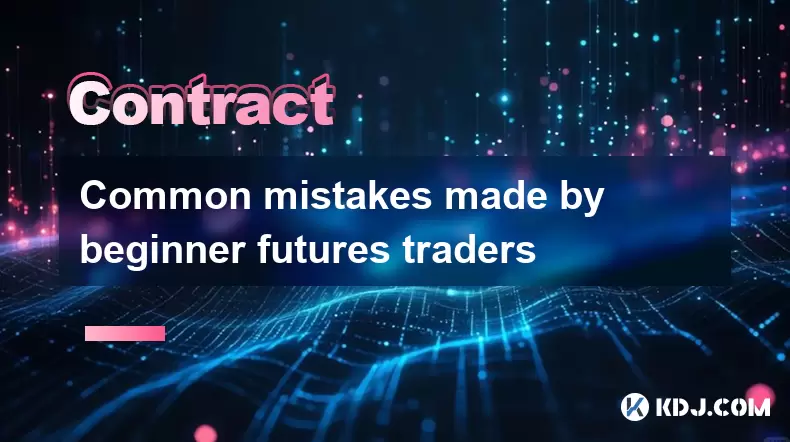-
 Bitcoin
Bitcoin $118,698.3676
0.16% -
 Ethereum
Ethereum $3,428.4877
5.97% -
 XRP
XRP $3.2496
9.52% -
 Tether USDt
Tether USDt $1.0002
0.00% -
 BNB
BNB $725.6930
4.36% -
 Solana
Solana $174.8923
4.52% -
 USDC
USDC $0.9997
-0.02% -
 Dogecoin
Dogecoin $0.2139
6.02% -
 TRON
TRON $0.3155
4.62% -
 Cardano
Cardano $0.8045
7.12% -
 Hyperliquid
Hyperliquid $46.6582
-1.72% -
 Stellar
Stellar $0.4676
0.80% -
 Sui
Sui $4.0143
0.38% -
 Chainlink
Chainlink $17.1546
2.97% -
 Hedera
Hedera $0.2458
3.27% -
 Bitcoin Cash
Bitcoin Cash $496.5967
-0.06% -
 Avalanche
Avalanche $22.8813
3.13% -
 Shiba Inu
Shiba Inu $0.0...01439
3.42% -
 UNUS SED LEO
UNUS SED LEO $8.8389
0.42% -
 Toncoin
Toncoin $3.2113
2.82% -
 Litecoin
Litecoin $101.2646
4.24% -
 Polkadot
Polkadot $4.2262
2.32% -
 Monero
Monero $340.4295
2.92% -
 Pepe
Pepe $0.0...01365
2.92% -
 Uniswap
Uniswap $8.9702
-2.78% -
 Bitget Token
Bitget Token $4.7675
2.00% -
 Dai
Dai $0.9998
-0.02% -
 Ethena USDe
Ethena USDe $1.0003
-0.04% -
 Aave
Aave $324.6394
-2.11% -
 Bittensor
Bittensor $433.6051
-0.88%
How to use a crypto futures calculator for PnL?
A crypto futures calculator helps traders estimate profit and loss by factoring in entry/exit prices, leverage, fees, and funding rates for better risk management.
Jul 10, 2025 at 05:28 pm

Understanding the Basics of a Crypto Futures Calculator
A crypto futures calculator is an essential tool for traders involved in cryptocurrency derivatives. It helps users estimate their profit and loss (PnL) before entering or closing a position. Understanding how to use this tool can significantly improve your trading strategy and risk management.
Futures contracts allow traders to speculate on the future price of cryptocurrencies like Bitcoin, Ethereum, or Solana without owning the actual asset. When using a crypto futures calculator, it’s important to input accurate values such as entry price, exit price, leverage, contract size, and fees.
The calculator typically uses formulas based on futures trading mechanics, including whether the trade is long or short. Some calculators also account for funding rates in perpetual contracts, which are common in crypto futures markets.
Key Inputs Required in a Crypto Futures Calculator
To compute PnL accurately, a trader must provide several inputs:
- Entry Price: The price at which you open your position.
- Exit Price: The price at which you close your position.
- Position Size: The amount of cryptocurrency you're trading.
- Leverage Used: Whether 2x, 5x, 10x, etc., leverage impacts potential gains and losses.
- Contract Type: Perpetual or fixed-term futures.
- Trading Fees: Maker and taker fees charged by the exchange.
Each of these elements plays a crucial role in determining the final profit or loss. For example, higher leverage increases both potential returns and risks. Similarly, small differences in entry and exit prices can have significant effects when large positions are involved.
Some advanced calculators also allow users to enter funding rate costs if they're holding perpetual futures overnight. These rates fluctuate depending on market conditions and can affect overall profitability.
How to Calculate PnL Manually for Better Insight
While most platforms offer built-in calculators, understanding the manual calculation helps verify accuracy and deepen comprehension. The basic formula for PnL in futures trading is:
PnL = (Exit Price - Entry Price) × Position Size
If the result is positive, it indicates profit; if negative, a loss. However, this doesn’t include leverage or fees yet. To factor in leverage:
PnL with Leverage = ((Exit Price - Entry Price) / Entry Price) × Leverage × Investment Amount
This version shows how leverage amplifies outcomes. Additionally, subtracting trading fees and funding costs gives a more realistic net profit or loss.
For example, opening a $10,000 long position on BTC with 10x leverage means controlling $100,000 worth of BTC. If the price rises by 5%, the gain becomes 50% due to leverage, but fees and slippage may reduce that return.
Using Online Tools: Step-by-Step Guide
Many online tools simplify the process. Here's how to use them effectively:
- Choose a reliable calculator: Look for one from a reputable source or directly on your exchange platform.
- Select the correct pair: Ensure the calculator supports the specific crypto pair you’re trading (e.g., BTC/USDT).
- Input entry and exit prices: Be precise with decimal points for accuracy.
- Set leverage level: Enter the leverage used in your trade.
- Add fees and funding costs: Include any additional charges if applicable.
- Click calculate: Review the output and compare with your expectations.
Some platforms like Binance, Bybit, and TradingView offer integrated calculators. Always double-check the numbers entered to avoid errors. Even a slight misinput in leverage or price can lead to incorrect projections.
Common Mistakes to Avoid When Using a Futures Calculator
Traders often make errors that lead to inaccurate PnL calculations. One of the most frequent mistakes is forgetting to account for fees. Exchanges charge maker and taker fees, which vary between platforms.
Another common error involves misjudging leverage impact. Higher leverage isn't always better—it increases liquidation risk. Traders might overlook this while calculating expected returns.
Also, some ignore funding costs in perpetual futures. Over time, especially in sideways markets, these costs can eat into profits or amplify losses.
Lastly, incorrectly entering entry or exit prices—especially during fast-moving markets—can skew results. Always confirm the exact figures before relying on the output.
FAQs About Using a Crypto Futures Calculator
Q: Can I use the same calculator for all crypto exchanges?
A: Not necessarily. Each exchange may have different fee structures, contract sizes, and leverage options. Use a calculator compatible with your specific exchange or manually adjust for discrepancies.
Q: How do funding rates affect my PnL in perpetual futures?
A: Funding rates are periodic payments made to balance long and short positions. They are usually small but can accumulate over time, especially in prolonged trades. A good calculator includes a field for entering expected funding rates.
Q: Is there a difference between realized and unrealized PnL in futures?
A: Yes. Realized PnL occurs after closing a position, while unrealized PnL reflects current value based on market price. Calculators typically show realized PnL unless specified otherwise.
Q: Do I need to consider slippage in PnL calculations?
A: Slippage is the difference between expected and actual execution prices. While not always included in standard calculators, it's crucial to account for it, especially during high volatility or low liquidity.
Disclaimer:info@kdj.com
The information provided is not trading advice. kdj.com does not assume any responsibility for any investments made based on the information provided in this article. Cryptocurrencies are highly volatile and it is highly recommended that you invest with caution after thorough research!
If you believe that the content used on this website infringes your copyright, please contact us immediately (info@kdj.com) and we will delete it promptly.
- Maharashtra Government Nurses Launch Indefinite Strike: A Healthcare Crisis?
- 2025-07-18 04:30:13
- Hilbert Group, Syntetika, and Tokenization: Bridging DeFi and Institutional Finance
- 2025-07-18 05:30:12
- Crypto Regulation in the US House: Decoding the CLARITY Act and What It Means for You
- 2025-07-18 04:30:13
- Superman Soars on Coins and Medals: A Collector's Guide to Comic Art Treasures
- 2025-07-18 05:30:12
- Bitcoin Whale Wallets in Motion: What's the Buzz?
- 2025-07-18 05:35:13
- Pepeto, Dogecoin, Popcat: Meme Coin Mania in 2025!
- 2025-07-18 05:50:12
Related knowledge

What is a stablecoin-margined contract vs a coin-margined contract?
Jul 15,2025 at 06:36pm
Understanding the Difference Between Stablecoin-Margined Contracts and Coin-Margined ContractsIn the world of cryptocurrency derivatives, margin plays...

How to analyze volume profile for Bitcoin futures?
Jul 17,2025 at 01:21am
Understanding Volume Profile in Bitcoin Futures TradingVolume profile is a crucial analytical tool used by traders to assess the distribution of tradi...

How to backtest a Bitcoin futures trading strategy?
Jul 15,2025 at 11:35am
Understanding Bitcoin Futures TradingBitcoin futures trading involves contracts to buy or sell Bitcoin at a predetermined price and date in the future...

Common mistakes made by beginner futures traders
Jul 17,2025 at 07:49am
Overleveraging Without Understanding the RisksOne of the most frequent mistakes made by beginner futures traders is overleveraging their positions. Fu...

Psychology of trading Bitcoin contracts
Jul 13,2025 at 02:50am
Understanding the Emotional Rollercoaster of Bitcoin Futures TradingBitcoin contract trading, especially in the form of futures, introduces a high lev...

How to build a trading plan for Bitcoin futures?
Jul 17,2025 at 08:42am
Understanding Bitcoin Futures TradingBitcoin futures are derivative contracts that allow traders to speculate on the future price of Bitcoin without o...

What is a stablecoin-margined contract vs a coin-margined contract?
Jul 15,2025 at 06:36pm
Understanding the Difference Between Stablecoin-Margined Contracts and Coin-Margined ContractsIn the world of cryptocurrency derivatives, margin plays...

How to analyze volume profile for Bitcoin futures?
Jul 17,2025 at 01:21am
Understanding Volume Profile in Bitcoin Futures TradingVolume profile is a crucial analytical tool used by traders to assess the distribution of tradi...

How to backtest a Bitcoin futures trading strategy?
Jul 15,2025 at 11:35am
Understanding Bitcoin Futures TradingBitcoin futures trading involves contracts to buy or sell Bitcoin at a predetermined price and date in the future...

Common mistakes made by beginner futures traders
Jul 17,2025 at 07:49am
Overleveraging Without Understanding the RisksOne of the most frequent mistakes made by beginner futures traders is overleveraging their positions. Fu...

Psychology of trading Bitcoin contracts
Jul 13,2025 at 02:50am
Understanding the Emotional Rollercoaster of Bitcoin Futures TradingBitcoin contract trading, especially in the form of futures, introduces a high lev...

How to build a trading plan for Bitcoin futures?
Jul 17,2025 at 08:42am
Understanding Bitcoin Futures TradingBitcoin futures are derivative contracts that allow traders to speculate on the future price of Bitcoin without o...
See all articles

























































































